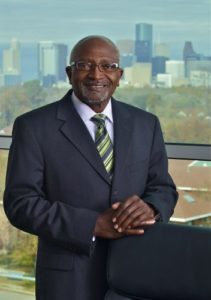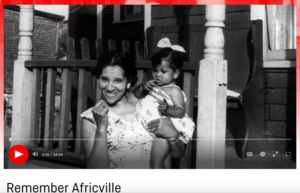Social justice issues have been headline news in the past year, from the Women’s March on Washington in January 2017 to the #MeToo movement, from Standing Rock to BC’s refusal to implement the Kinder Morgan pipeline. It’s a critical time for young people to learn about equity and justice issues, and what they mean for planners.
The 2018 Winter term marks the second time I’ve taught a Social Justice course at the Dalhousie School of Planning. The course is somewhat of a novelty at a school that largely focuses on urban design and technical skills such as GIS, which is probably one reason students seem to like it. For me, social planning is such a critical component of a planner’s work that I’m not sure how it can be absent from a planning education. This is undoubtedly due to my training at the UBC School of Community and Regional Planning, where social planning and environmental planning/ sustainability were the two foundational sub-disciplines.

At Dalhousie, the social justice course overlaps with social planning on some aspects, and forges new ground in others. The course focuses on a particular issue each week:
- Environmental justice
- Sustainability
- Ethnicity and immigration status
- Gender
- Community engagement
- Housing
- Transportation
- Urban redevelopment
- Equity plans
I was fortunate enough to work on the Over the Line symposium last fall with Ingrid Waldron, which helped raise the profile of social justice in the region. Through this I was able to get in touch with a number of people who agreed to be guest speakers in my course this term. They have really brought the issues to life for our students.
Kelly Poirier, Amber Walker and Leticia Smillie gave students an overview of the Mobile Food Market for residents of underserved communities. The project touches on issues of land use, difficulties in attracting major grocery stores to low-income communities, and historic discrimination in some areas (e.g. North Preston, East Preston). Walker, a planner at Nova Scotia Health Authority, and Smillie, a planner at the Halifax Regional Municipality, described how the project is being evaluated so that it can be expanded beyond its six pilot locations.
Rebecca Moore, a land defender from the Mi’kmaq community (Pictou Landing First Nation), told stories from the front lines: protesting the proposed Alton Gas project and a drilling project in Quebec that threatens water quality. She explained the legal context through which Indigenous people can protest projects that threaten human and wildlife habitats and the treaty rights we share under the 1762 Treaty of Peace and Friendship. She also described the role of the Mi’kmaq Nation in the formation of the United States: the Treaty of Watertown established an alliance between the US and the Mi’kmaq and St. John’s Nations, and was the first treaty signed in the US after independence was declared in 1776.
Roberto Montiel, who works on a Local Immigration Partnership at Halifax Regional Municipality, discussed how Indigenous peoples tellt he story of Canada’s past while immigrants play a key role in its future. He discussed the pilot Dialogue project that HRM launched last year. As a partnership between the Mi’kmaq Nation, HRM, and immigrant service providers in the region, immigrants who have been in Canada for less than six months attend an event hosted by the Mi’kmaq community to learn about the history of Canada. Montiel described the common ground between the attendees as natural, as many immigrants had come from countries that had been colonized or communities that had been oppressed. The event had interpreters, in this case speaking Arabic and French, the most commonly spoken languages in the group. One of our students, whose family immigrated from Syria, volunteered to be an interpreter herself, as she is fluent in English, French, and Arabic. Montiel is hoping the project can expand beyond the pilot stage in the future, and in the meantime is busy building partnerships between HRM and immigrant service providers as part of the Welcoming Cities initiative of the federal government.

This week I discussed equity issues related to gender, from the Time’s Up movement and the “unfounded rate” in Canadian cities to David Schwimmer’s sexual assault PSAs (upon student request we watched one of them in class…they are cringe-worthy). I discussed a few ways planners might engage LGBTQ communities. We discussed the work of Women Transforming Cities and will be using their guide to community engagement in next week’s class. I will use other resources too: we’ll be watching National Film Board film Remember Africville and a CMHC film on the construction of Mulgrave Park (1961) in our class on urban redevelopment. The two films tell opposite sides of the urban regeneration story, which are still entrenched in modern urban redevelopment projects.
The class always includes a 30-minute written response to our guest lecture and a discussion of the readings. The Masters students lead a discussion and write a 5-page summary of the readings and seminar. Students’ written responses have really improved even a month into the course, with strong thesis statements, clear structures and argumentation. Initially they were worried about the practice of weekly writing, so I think this has really removed the fear and allowed them to be more reflective than usual. They’re able to write in a more personal, narrative way than they often do for class assignments. They are preparing to choose topics for their final papers, due at the end of the term.
It’s been a real pleasure teaching a course that adds so much value to a planners’ education. I intend to keep the course small (fewer than 35 students) to enable deep discussion and reflection, which tends to disappear in the larger classes. Hopefully there will be a good mix of students in the years to come as well, as it’s open to all Dalhousie students in third year or higher. The interaction of students in economics, management, and planning this year has really contributed to the discussions.
